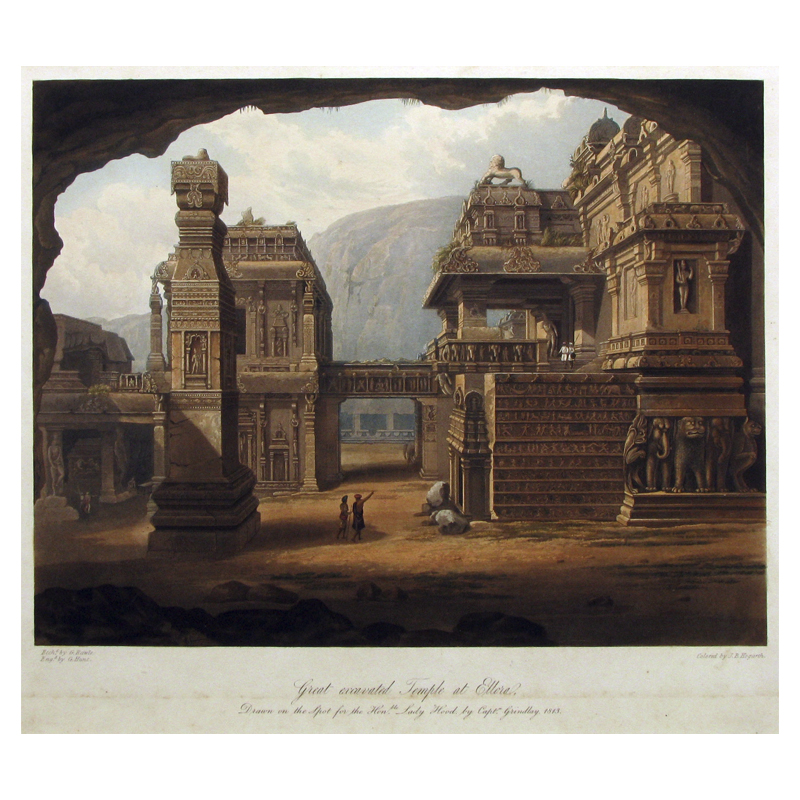Great Excavated Temple at Ellora
Description
When Britain was expanding its political and economic hold over India, an artistic and technological shift was happening that enabled an accurate pictorial record of the country. By the late 18th century CE, drawing and painting were making space for a variety of prints (lithographs and others) recording the land, its people, and their culture. A century later photographs replaced both as a more reliable visual record. After 1770, professional artists began to visit India and observe the country through the eyes of British taste. They made oil paintings for local British residents, as well as drawings, which could later be worked up in England into engravings. Suddenly the market had numerous copies of the same subject.
After the Anglo-Maratha war, the British residents started taking interest in western India. The appearance of Captain Robert Melville Grindlay’s book “Scenery, Costumes, and Architecture” shows a shift of interest from Eastern to Central India, Rajputana, Deccan, and Gujarat. This print captures the view of the mystical Kailash Temple at Ellora in Aurangabad district, Maharashtra, at a time when India was in the process of discovery. The late 18th to early 19th centuries were a time of many changes. History was transitioning from the medieval to the modern. Such records are important because the mid of the 19th century saw the rediscovery of an ancient India as well as the making of the modern. These prints record India as it was just before this transit.
It was drawn by Robert Melville Grindlay (1789 – 1877) and was drawn on the spot for the Hon Lady Hood by Captain Grindlay in 1813.
Gift by Pauline & Roy Rohatgi
Collection
Prints, Drawings and Photographs
Artist
Robert Melville Grindlay
Object Type
Material
Paper
Schools/Culture/Period
Modern
Technique
--
Date
1826 – 1830 CE
Location
London
Dimension
--
